There are extraordinary wildlife viewing opportunities above and below the surface of the sea at Molokini. At the same time, certain species tend to congregate in specific areas (such as “Tako Flats,” where many octopuses can be found, or “Shark Condos,” where harmless reef sharks cruise). Almost any area of Molokini is teeming with wildlife.
The Reef Is Alive
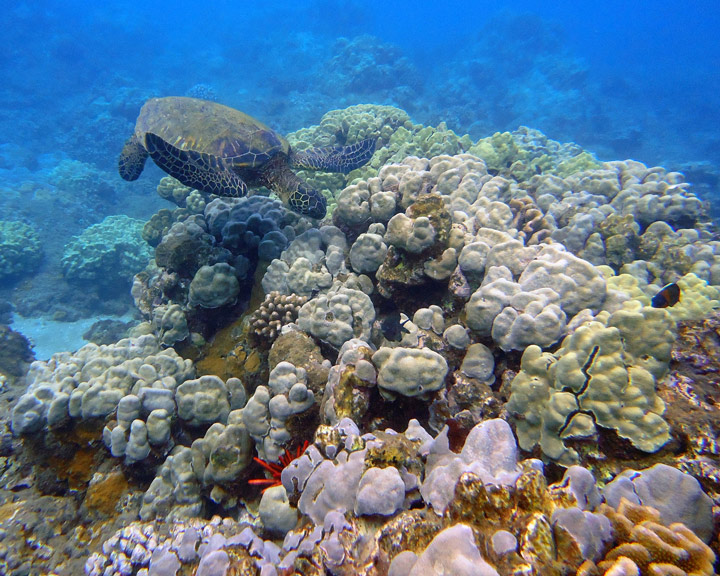 The biggest organism at Molokini is the coral reef itself. Though they look like inanimate rocks, corals are actually in their own scientific class. These curious creatures are a combination of plants and animals. It can take decades for a relatively small coral to develop, so the reef must be treated with caution and care.
The biggest organism at Molokini is the coral reef itself. Though they look like inanimate rocks, corals are actually in their own scientific class. These curious creatures are a combination of plants and animals. It can take decades for a relatively small coral to develop, so the reef must be treated with caution and care.
Research has shown that synthetic sunscreen can actually damage the reef by leaving a film over it, interrupting or disabling photosynthesis. This may seem like a localized problem for one coral, but considering that coral reefs provide the ocean with oxygen, one can understand how crucial it is to protect the reef from harm.
Reefs comprise corals, seaweeds, algae, and many invertebrates coexisting in a delicately balanced symbiosis. Many coral reefs also serve as cleaning stations where fish come to get rid of their parasites. Colorful wrasses can be seen nibbling on larger fish, even inside their mouths. These fish are in no danger because no fish wants to kill or eat these beneficial custodians of the sea.
Schools of Fish
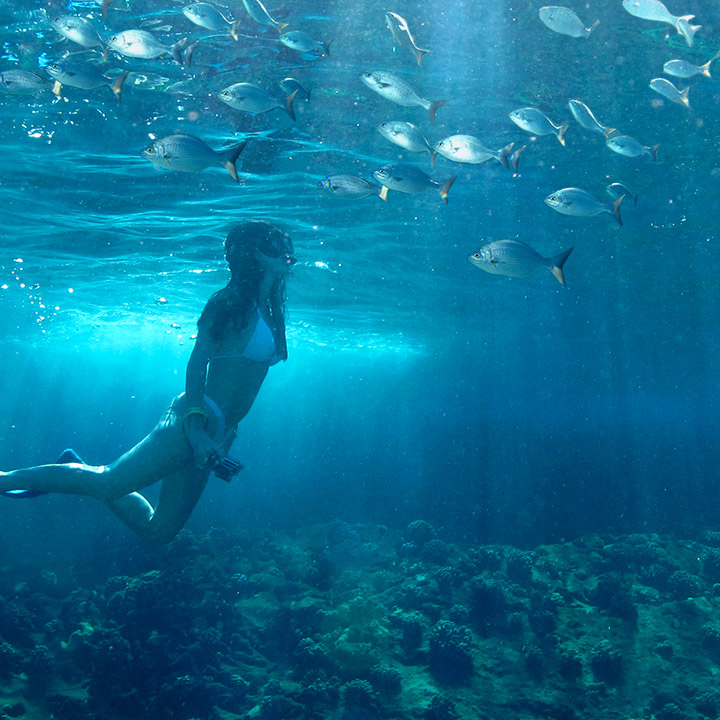 About 260 different types of fish inhabit the underwater sanctuary, where they spawn prolifically. Often, schools of young fish can be seen moving in unison among the corals, like a miniature ballet.
About 260 different types of fish inhabit the underwater sanctuary, where they spawn prolifically. Often, schools of young fish can be seen moving in unison among the corals, like a miniature ballet.
Commonly encountered fish while snorkeling in the shallow reef are butterfly fish, yellow tangs, wrasses of several varieties, triggerfish (including the colorful humuhumunukunukuapua’a and the humuhumunukunukuele’ele), trumpet fish, damselfish, parrotfish, Moorish idols, unicornfish, trevally, squirrelfish, manini, and sergeant fish, to name a few. These fish are accustomed to the presence of snorkelers in the water and will swim among people nearby without hesitation.
Also easily recognized among the vibrantly colored coral reef are bright red pencil urchins, sea cucumbers, sea slugs, invertebrates like feather dusters (which withdraw quickly into their tube-like shells when disturbed), long-spined black urchins, and the shorter spiny collector urchins, which are often covered with bits of debris they have collected as camouflage.
SNUBA and SCUBA divers descending deeper may also discover eels, shellfish such as Triton’s trumpet snails and cowrie snails, scorpionfish, goatfish, and octopus hidden among the coral crevices. Reef sharks also cruise among the reef. A vital part of the habitat, these apex predators keep the entire ecosystem in balance, preventing the spread of disease and decay by culling populations and removing sick or injured fish.
Establishing Sanctuary
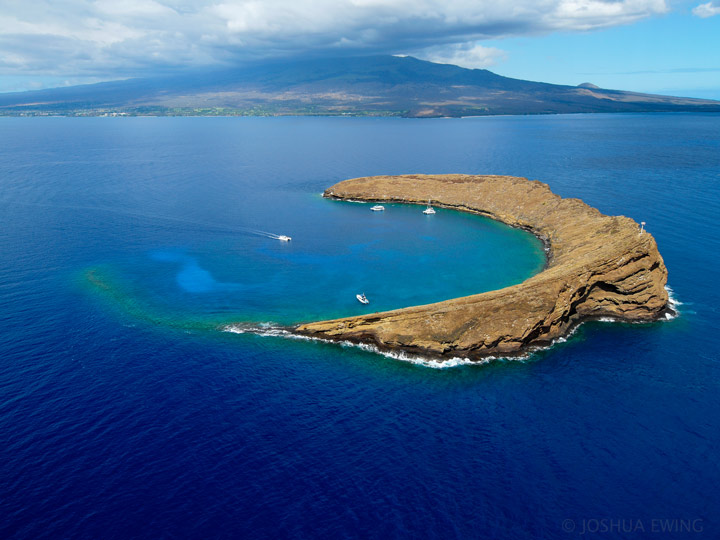 Finally, in 1977, Molokini’s ecosystem was granted a reprieve from the abuses it had endured. The islet, caldera, and surrounding 77 acres of underwater terrain were declared a Marine Life Conservation District, and Molokini remains protected to this day.
Finally, in 1977, Molokini’s ecosystem was granted a reprieve from the abuses it had endured. The islet, caldera, and surrounding 77 acres of underwater terrain were declared a Marine Life Conservation District, and Molokini remains protected to this day.
Now Federally owned and protected by the US Coast Guard and the Hawai’i Division of Forestry and Wildlife, its use is closely monitored. Federal protections have increased, with stiff penalties for dropping anchor (a limited number of assigned moorings are used), touching or feeding wildlife, leaving waste of any kind, climbing upon the bluff, and even creating smoke from grills aboard boats while moored in the area.
Once a dangerous shallow submarine volcano extruding magma and roiling steam with violent force, shattering upon itself in the fury of creation, Molokini has survived pillage and plunder and finally mellowed to become a haven for marine researchers and visitors and find purpose and delight in exploring and enjoying this remarkable venue.
Very rarely, a whale shark may be seen at Molokini. These goliath fish are not whales, though their size indicates otherwise. During whale season (November – May), humpback whales can be observed throughout Maui’s channel and surrounding waters, though they do not usually venture into the crater area.
Life Above The Water
The sanctuary of Molokini is not limited to the underwater realm. The islet precipice itself is home to flocks of seabirds, including Great Frigates, Red-footed Booby, Wedgetail Shearwaters, and Bulwer’s Petrels. A glance upwards reveals their nests and distinct silhouettes gliding along the thermals in the sky.
Bullies of The Sky
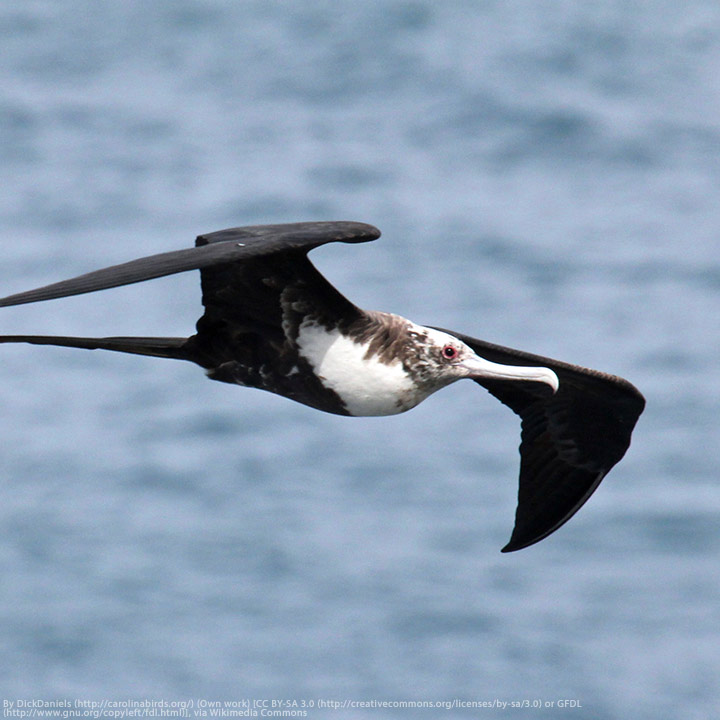 Great frigate birds are fascinating animals. Though they are seabirds, they cannot actually get their wings wet. Doing so would put them at significant risk of drowning since they lack the oily feathers to dry quickly and regain flight. Because of this disadvantage, they have developed a survival skill that gives them the dubious distinction of being the bullies of Molokini. Although sometimes observed dipping their beaks just an inch or so into the water to capture a fish close to the surface, they will often snatch a fish from another bird.
Great frigate birds are fascinating animals. Though they are seabirds, they cannot actually get their wings wet. Doing so would put them at significant risk of drowning since they lack the oily feathers to dry quickly and regain flight. Because of this disadvantage, they have developed a survival skill that gives them the dubious distinction of being the bullies of Molokini. Although sometimes observed dipping their beaks just an inch or so into the water to capture a fish close to the surface, they will often snatch a fish from another bird.
These infamous birds have an ominous silhouette in the sky. They have wingspans averaging 42 inches and the largest wingspan-to-weight ratio of any bird.
Unfortunately, the seabird has just caught a tasty fish, and a frigate takes notice, as the frigate will chase and harass the seabird until it drops or even regurgitates the fish. They are even known to attack their neighbors, red-footed booby, petrels, and shearwaters, and the injuries from those attacks can be indirectly fatal if the bird can no longer fly or feed itself.
Also, frigates are weather beacons. When a storm approaches, the frigates will take to the sky and fly inland, soaring on the high temperatures in the sky until the weather passes. Frigates can stay aloft for days on thermals high in the atmosphere!
Sulas and Shearwaters
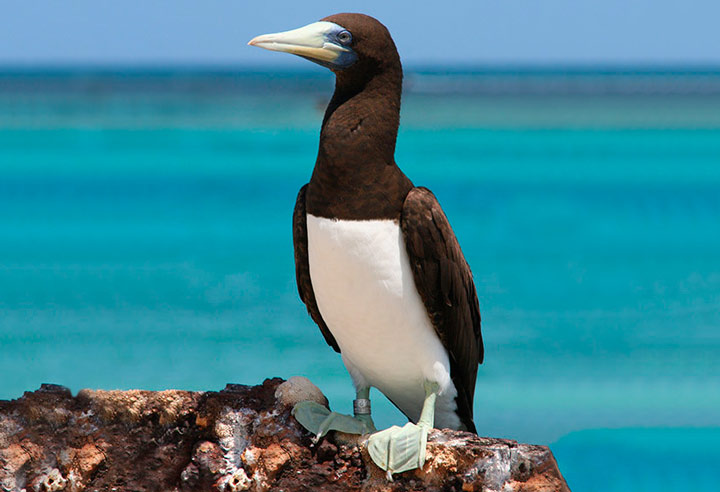 Three species of Sula (or booby) are known to live in Hawai’i: the masked booby, the red-footed booby, and the brown booby. Though most prefer to nest in Oahu and west to the Kure atoll, red-footed boobies can be found throughout the island chain and even on Molokini.
Three species of Sula (or booby) are known to live in Hawai’i: the masked booby, the red-footed booby, and the brown booby. Though most prefer to nest in Oahu and west to the Kure atoll, red-footed boobies can be found throughout the island chain and even on Molokini.
Shearwaters nest in holes they dig in the dirt themselves. While they can be found on Molokini, many choose to nest in the less crowded nature walk area between Kamaole 3 Beach Park and the Kihei Boat Ramp. Upon close inspection, one may often find a shallow burrow or even a nesting bird or chick inside or nearby.
Though vulnerable to predators like feral cats and mongooses, shearwater birds are faring pretty well as a species. Like many animals, their biggest threat is human interference. Often, shearwaters become disoriented by the lights at night and fly into light poles, roadways, or other dangerous areas.

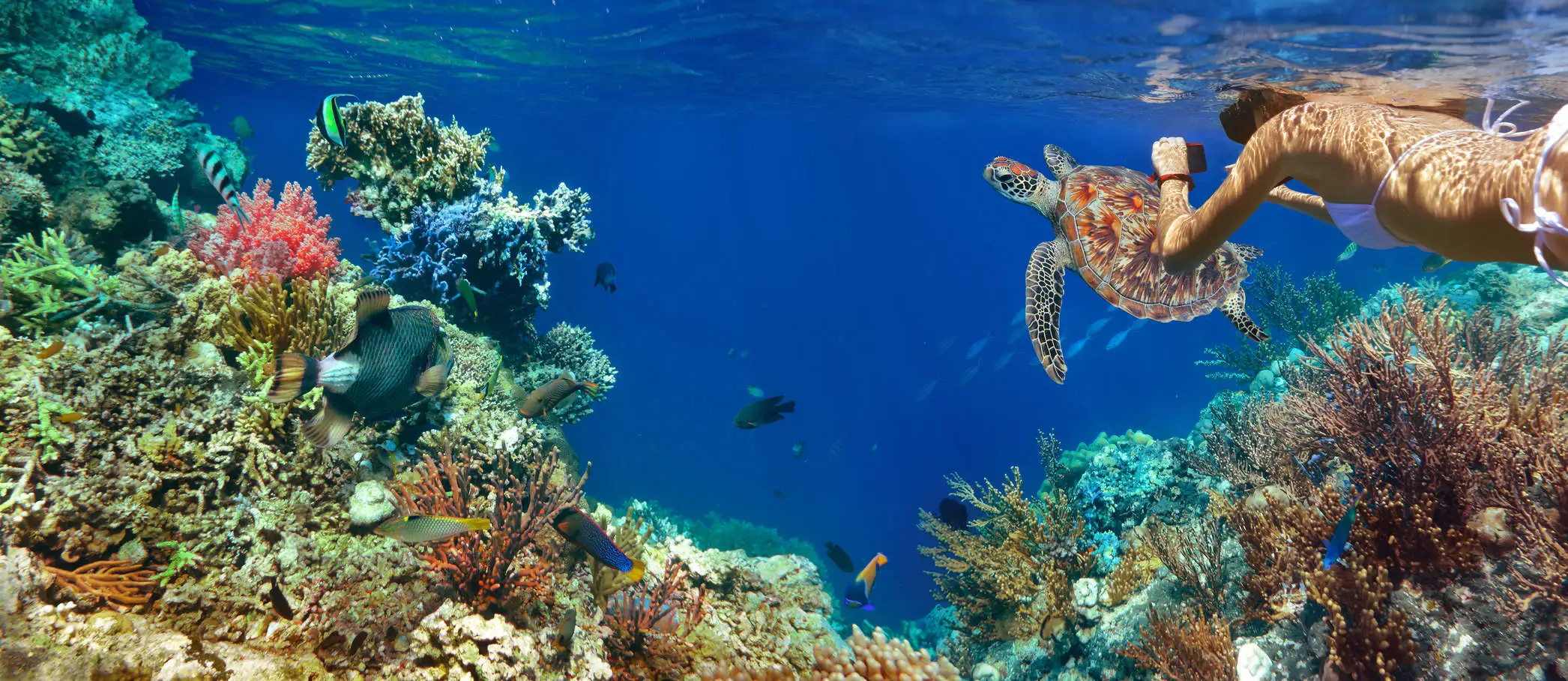

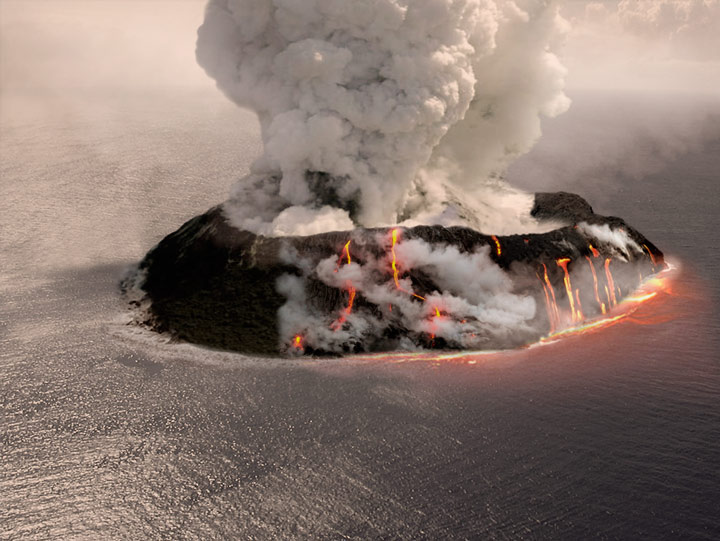 Molokini is one of only three sheltered submerged calderas on Earth, an ancient extinct volcanic crater. Just as molten lava flowing through the tectonic plates gave rise to all Hawai’i islands, Molokini is the result of volcanic eruption. It is unique because submarine eruptions create volcanic glass, which alters to brownish-yellow clay, giving Molokini its unique color and texture.
Molokini is one of only three sheltered submerged calderas on Earth, an ancient extinct volcanic crater. Just as molten lava flowing through the tectonic plates gave rise to all Hawai’i islands, Molokini is the result of volcanic eruption. It is unique because submarine eruptions create volcanic glass, which alters to brownish-yellow clay, giving Molokini its unique color and texture.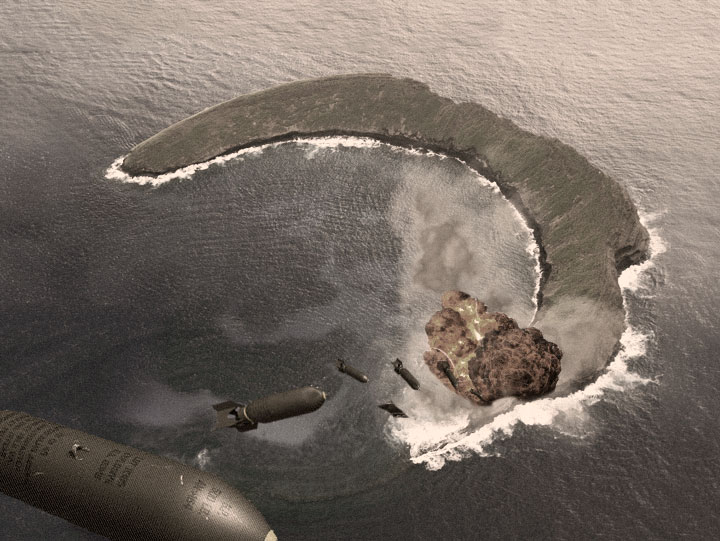 Fortunately, relics were collected since Molokini was subjected to a barrage of ammunition during target practice conducted by the US Navy during World War II. Before WW2, there was more of Molokini to enjoy. But war spares no one, and Molokini became a casualty, as did the neighboring island of Kaho’olawe. Between the artillery bombardment, natural ocean erosion, and rising sea levels, only the crescent atoll remains.
Fortunately, relics were collected since Molokini was subjected to a barrage of ammunition during target practice conducted by the US Navy during World War II. Before WW2, there was more of Molokini to enjoy. But war spares no one, and Molokini became a casualty, as did the neighboring island of Kaho’olawe. Between the artillery bombardment, natural ocean erosion, and rising sea levels, only the crescent atoll remains.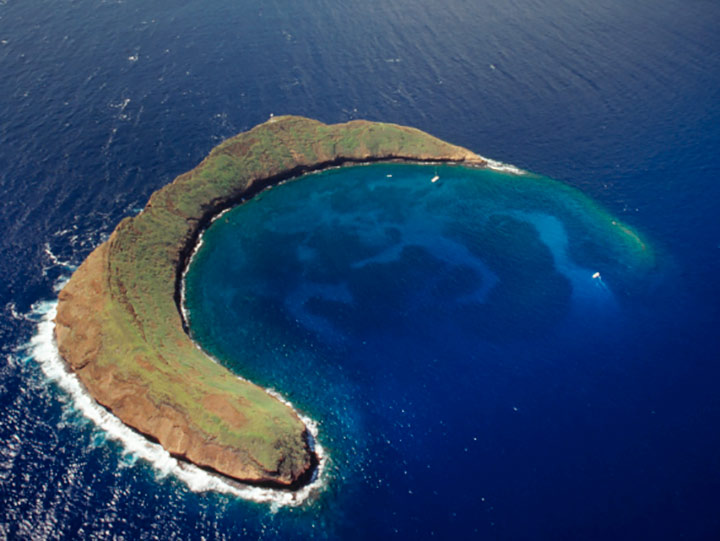 Finally, in 1977, Molokini’s ecosystem was granted a reprieve from the abuses it had endured. The islet, caldera, and surrounding 77 acres of underwater terrain were declared a Marine Life Conservation District, and Molokini remains protected to this day.
Finally, in 1977, Molokini’s ecosystem was granted a reprieve from the abuses it had endured. The islet, caldera, and surrounding 77 acres of underwater terrain were declared a Marine Life Conservation District, and Molokini remains protected to this day. The biggest organism at Molokini is the coral reef itself. Though they look like inanimate rocks, corals are actually in their own scientific class. These curious creatures are a combination of plants and animals. It can take decades for a relatively small coral to develop, so the reef must be treated with caution and care.
The biggest organism at Molokini is the coral reef itself. Though they look like inanimate rocks, corals are actually in their own scientific class. These curious creatures are a combination of plants and animals. It can take decades for a relatively small coral to develop, so the reef must be treated with caution and care. About 260 different types of fish inhabit the underwater sanctuary, where they spawn prolifically. Often, schools of young fish can be seen moving in unison among the corals, like a miniature ballet.
About 260 different types of fish inhabit the underwater sanctuary, where they spawn prolifically. Often, schools of young fish can be seen moving in unison among the corals, like a miniature ballet. Finally, in 1977, Molokini’s ecosystem was granted a reprieve from the abuses it had endured. The islet, caldera, and surrounding 77 acres of underwater terrain were declared a Marine Life Conservation District, and Molokini remains protected to this day.
Finally, in 1977, Molokini’s ecosystem was granted a reprieve from the abuses it had endured. The islet, caldera, and surrounding 77 acres of underwater terrain were declared a Marine Life Conservation District, and Molokini remains protected to this day. Great frigate birds are fascinating animals. Though they are seabirds, they cannot actually get their wings wet. Doing so would put them at significant risk of drowning since they lack the oily feathers to dry quickly and regain flight. Because of this disadvantage, they have developed a survival skill that gives them the dubious distinction of being the bullies of Molokini. Although sometimes observed dipping their beaks just an inch or so into the water to capture a fish close to the surface, they will often snatch a fish from another bird.
Great frigate birds are fascinating animals. Though they are seabirds, they cannot actually get their wings wet. Doing so would put them at significant risk of drowning since they lack the oily feathers to dry quickly and regain flight. Because of this disadvantage, they have developed a survival skill that gives them the dubious distinction of being the bullies of Molokini. Although sometimes observed dipping their beaks just an inch or so into the water to capture a fish close to the surface, they will often snatch a fish from another bird. Three species of Sula (or booby) are known to live in Hawai’i: the masked booby, the red-footed booby, and the brown booby. Though most prefer to nest in Oahu and west to the Kure atoll, red-footed boobies can be found throughout the island chain and even on Molokini.
Three species of Sula (or booby) are known to live in Hawai’i: the masked booby, the red-footed booby, and the brown booby. Though most prefer to nest in Oahu and west to the Kure atoll, red-footed boobies can be found throughout the island chain and even on Molokini.



































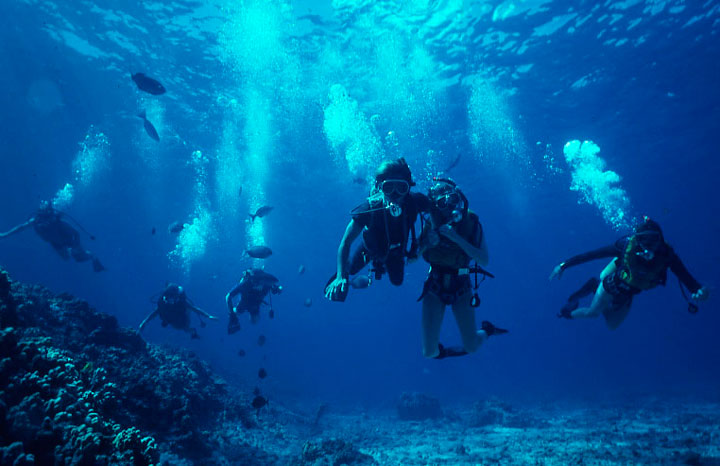
 Snorkelers can easily enjoy the inner and middle reef areas, perusing the circumference of the crater wall and the extending reef with ease. Because visibility often exceeds 150 feet in this transparent expanse, snorkelers can enjoy unobstructed views of the deeper reef without actually having to dive close to them.
Snorkelers can easily enjoy the inner and middle reef areas, perusing the circumference of the crater wall and the extending reef with ease. Because visibility often exceeds 150 feet in this transparent expanse, snorkelers can enjoy unobstructed views of the deeper reef without actually having to dive close to them.